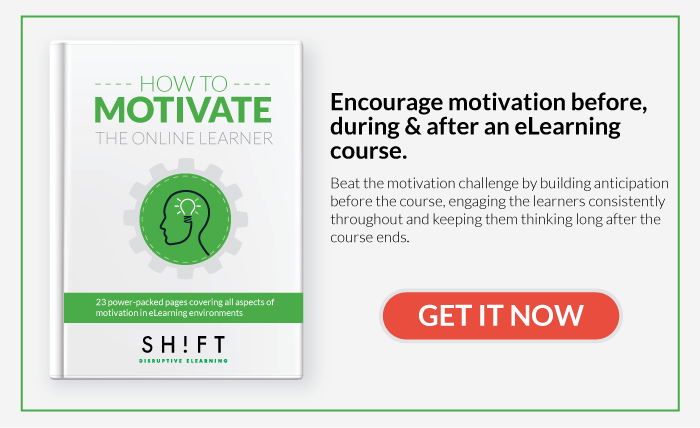In today's fast-paced, technology-driven world, it's crucial to update our training methods to meet the needs of modern learners. This goes beyond simply incorporating technology and addressing shortened attention spans. It's about equipping the workforce with the tools they need to feel satisfied in their jobs and to be valuable assets to the company as a whole.
To achieve this, it's essential to say goodbye to traditional methods such as long lectures and dense presentations. These methods are not only tedious but also ineffective. Today's learners thrive on engagement, interaction, and personalization. By adopting new methods that focus on active learning and providing real-life examples, we can ensure that our workforce is equipped with the skills and knowledge they need to excel in their roles.
Consider anytime that you’ve had to sit through a seminar or lecture. What do you remember from it? It’s likely you probably have a more vivid memory of what kind of doughnuts they served in the conference room after than the lecture itself. Look no further than this example to see why changing learning preferences and media consumption is so important.
Changing the way we train employees is imperative because employees themselves are also changing. In order to make the most effective changes to our learning and development programs we need to know this new learner profile that is rising: “The Empowered Learner.”
An empowered learner is someone who is actively engaged in their own learning process and has the necessary skills, knowledge, and resources to take control of their learning journey. They have the ability to set their own learning goals, seek out and access information, and evaluate and reflect on their learning experiences. Empowered learners are self-motivated, curious and willing to take risks in their learning process. They also have a growth mindset, seeing challenges as opportunities for growth and development, rather than obstacles to be overcome.
Here are four key things you need to know about the new profile of learners we have in the workplace:
1) They are Students of Professor Google
Today’s learners want information at the moment of need. They want information immediately and loathe the idea of getting it in an inefficient manner because they are used to this speed and because their lives are too packed to not have it.
The Internet is a powerful tool for accomplishing this goal, and modern learners are leveraging its awesomeness with a vengeance. In fact, more than 70% of workers use the web as a go-to source of information about their jobs and any unforeseen problems that arise. And why wouldn’t they? Quick Google searches are what they’ve grown up with, and they are pretty darn useful. This has become a constant part of their lives, and they are bringing this drive for information “right now” to the workplace along with all their mobile devices that make searching immediately possible.
But wait. This doesn’t mean workers want only completely informal learning, but they do need formal training to be delivered in a concise and efficient way, 24/7, and on-demand. This is because they require that information while their work is handy, so it has to be quick to keep productivity going.
The answer to both formal and efficient? Micro-Learning. Elearning courses broken down into digestible modules present an opportunity for learning to be just-in-time while also having structure. These modules need to be short and easy to access as needed to work alongside Web-search learning. Workers can learn this way without breaking their workflow.
2) They Own Multiple Devices
Modern learners use computers, phones, tablets, and a variety of other devices and hybrids to access the Internet. While smartphones are the most used and most multi-functional for the majority of learners, you can’t limit your courses to these devices. A smartphone may be easiest to use while commuting to work, but that doesn’t mean a learner won’t want to view your course on a larger screen once they are at their desk.
Users are even prone to accessing your learning content on two different devices at the same time. Example: Streaming videos on a laptop while using a smartphone to scroll through social media.
What does this mean for eLearning development and training? Your content should be available anywhere your learners are and on all their devices because this is what they expect.
You need to start planning for micro-learning moments too. Here's a guide on how to do it.
Also read: Why Responsive eLearning is Essential to Meet Modern Learner Needs
This also means that your content needs to be exceptionally engaging to break through all the distractions created by multiple screens, social media outlets, and news sources. Even more importantly, your information needs to be relevant. Interesting or fun content is good to a degree, but learners will back out when they don’t see value in your information.
3) They Want to Learn On Their Own Terms
In the age of empowerment, learners expect employers to not only present relevant information and training that will make their jobs better and easier but also give them choices in how they get it.
What choices do they want? It mostly comes down to flexibility. They want to be able to learn when and where they want, not be stuck in a classroom or have to log in at a specific time each day. Empowered learners also like the choice of how the material is presented. They crave multiple formats. Sometimes they feel like watching a video, sometimes they don’t.
As an eLearning designer, you need to consider and create multiple paths to get to the same conclusion to accommodate this need for flexibility. For example, your course should be responsive - aka. designed so that it can be started on one device and continued on another and back again.
Online learning naturally appeals to the modern workforce because it doesn’t require learners to be stuck at their desks or in a room the entire day. For salaried workers, it is particularly useful to be able to squeeze in training during a commute or during lunch instead of having to take time away from regular work to learn. The idea is to embed learning into day-to-day work.
This is something that is attractive to all learners, not just Millennials. All learners enjoy being able to pick and choose what they learn to address issues that are the most pressing at that time. We, as designers, can empower our learners of all ages by giving them choices and making them feel included in how they learn.
4) They Expect Ongoing Learning
The Pew Research Center revealed that "87 percent of adults in the workforce acknowledge that it will be essential or important for them to get training and develop new skills throughout their careers to keep up with changes in the workplace". This means they understand the importance of becoming a lifelong learner to keep up with change.
This is different from former workers who were OK with being passive recipients of the information. Today’s empowered learners, instead, are more curious, they have a constant hunger for learning, and they are enthusiastic to continue developing their skill sets throughout their careers. They don’t want to be pushed, motionless-style lectures anymore. This type of content delivery is drawn out and inconvenient. They want to be active and permanent participants in the learning process.
Proof of their hunger for ongoing learning and education is the Deloitte Millennial Survey 2016, which revealed that they want to spend a high proportion of their time learning. The research found that Millennials would like to up the time allotted for leadership development from 2.7 to 4.5 hours per week.
Read more: Learning Is Not a One-Time Event! Promote Continuous Learning
From Compliance to Engagement: The Impact of Empowering Learners on L&D Programs
Empowered Learners create an opportunity for companies to make training more personal and effective, but what does that mean?
Here is how this makes a difference: In the old days of employee training, it was common to load up an employee with ALL the information they would need all at once. This would often be done within the first few days of a job, and it was all mandatory and all at once.
Now, training goes more like this: when a new hire comes in, or an existing employee has a new job to do, there is a well-organized training catalog presented online. The employee is allowed to learn from it when he or she chooses to do so. This shows trust in the employee, basically saying “we know you’ll get the information you need when you need it. And we won’t push information you already have know.”
When training is required, you can give a deadline but give learners OPTIONS to do the lesson in one or multiple sessions. Typically a set of modules that are 10 minutes or less a piece is a good way to break this up.
This fosters that sense of empowerment which makes employees feel more invested in their own training.
What all this is saying is that a new learner profile is already here, and their needs and expectations are quite different from previous generations. Therefore, the L&D programs and training content and the tools and technology should reflect this new reality. Incorporating these choices and empowering your learners further gives you the opportunity to create a stronger company with happier, better-trained employees.
Also read: Five Rules of Engagement All eLearning Designers Should Live By
REFERENCES:
http://www.looop.co/wp-content/uploads/2015/09/The-Empowered-Learner-White-Paper.pdf
https://trenducation.wordpress.com/2016/04/19/what-is-an-empowered-learner/
http://www.med.wmich.edu/how-are-millennial-students-and-faculty-different-previous-generations
http://verticaldistinct.com/the-empowered-learner/
https://rubric.com/en-US/five-things-need-know-modern-day-consumer/
https://www.inkling.com/blog/2014/09/inkling-embraced-millennial-mindset/



